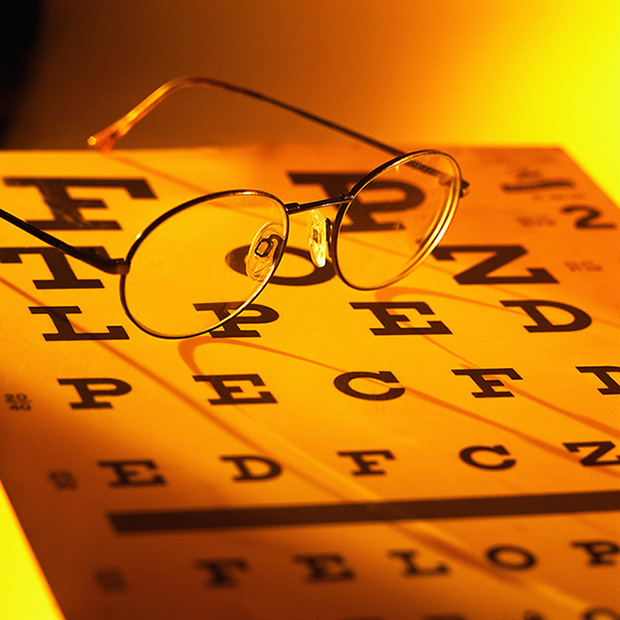What Does 20/20 Vision Mean?

One of the first phrases that comes to mind when people think about eyesight is “20/20 vision.”
We’ve heard since we were children sitting in the school nurse’s office waiting for our turn looking at the big E chart that 20/20 vision is the best, but what does it mean? Let’s take a look!
A Brief History Of The Snellen Chart
From the invention of glasses in the late 1200s until the mid-1800s, corrective lenses were largely approached with a “one size fits all” mindset. You could get reading glasses with convex lenses or glasses for seeing into the distance with concave lenses. If your vision was blurry at any distance, you could get Benjamin Franklin style bifocals, which had half of a convex lens in the bottom of the frame and half of a concave lens in the top. That was about as close as you could get to a custom prescription.
This all changed thanks to Dr. Herman Snellen, a Dutch eye doctor born in 1834. He created the Snellen chart, which is the formal name of that big E chart we all know and love. Before the Snellen chart, there was no standardized method of determining a person’s visual acuity, because different eye doctors would use their own charts. The chart Snellen made revolutionized optometry, and optometrists everywhere still use versions of it today!
The Snellen Ratio
Each line on the Snellen chart is 25 percent smaller than the one above it and represents what someone with normal vision would be able to see at a certain distance. Having 20/20 vision means you can see the same amount of detail at 20 feet as the average person who doesn’t need corrective lenses.
If you have 20/10 vision, it means you can see at 20 feet what the average person has to be twice as close to see, but if you have 20/40 vision, it means you have to be twice as close to something as the average person in order to see it. So if your vision is better than 20/20, enjoy your minor superpower! If it’s worse than 20/20, it’s time to find a stylish pair of glasses!
20/20 Vision Isn’t Everything
What many people don’t realize is that there’s more to a corrective prescription than just the Snellen ratio. It is possible to have normal or even above-average visual acuity and still have other eye problems, which is why it’s so crucial for everyone, especially children, to have comprehensive eye exams rather than only relying on the chart.
Since Snellen’s day, optometry has evolved, and we now also test eyes for how well they perceive contrast, color, depth, and peripheral sight, as well as how effectively they work together as a team. The Snellen chart also can’t measure overall eye health, which makes eye exams even more important.
Schedule Your Eye Exam Today!
If you haven’t had an eye exam in a while, don’t wait to schedule your next appointment, particularly if you’ve noticed a change in your vision or if your prescription isn’t providing your visual field with the same sharpness it used to. We look forward to seeing you — and to helping you see more clearly!
